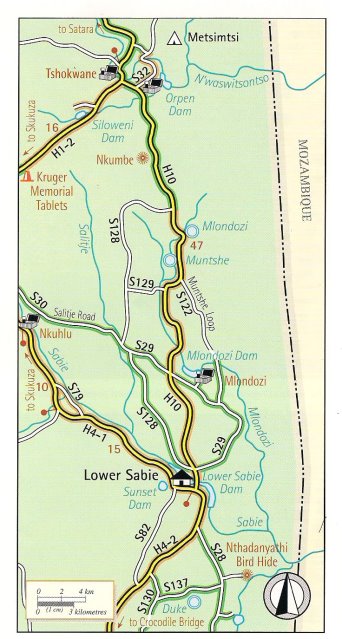Lower Sabie Rest Camp
-
Vleisvreter
- Posts: 20
- Joined: Mon Jun 04, 2012 12:38 pm
- Location: Piet Retief
- Contact:
Re: Lower Sabie Rest Camp
That would be nice to meet up with some other AW members.We will be there 26, 27,28 October. I wont be hanging a yellow ribbon of my mirrors  . Maybe I should hang a black and white ribbon in remembrance of all rhinos that have been killed.
. Maybe I should hang a black and white ribbon in remembrance of all rhinos that have been killed. 
16,17,18 September 2012 -Mopani
2,3,4 November 2012- Lower Sabie
2,3,4 November 2012- Lower Sabie
- Lisbeth
- Site Admin
- Posts: 65510
- Joined: Sat May 19, 2012 12:31 pm
- Country: Switzerland
- Location: Lugano
- Contact:
Re: Lower Sabie Rest Camp
I will put your dates in the "We will be in Kruger National Park from.... to...... " 
Don't forget the green ribbon
Don't forget the green ribbon
"Education is the most powerful weapon which you can use to change the world." Nelson Mandela
The desire for equality must never exceed the demands of knowledge
The desire for equality must never exceed the demands of knowledge
- Flutterby
- Posts: 44029
- Joined: Sat May 19, 2012 12:28 pm
- Country: South Africa
- Location: Gauteng, South Africa
- Contact:
Re: Lower Sabie Rest Camp
BD3Z, Unit 31 (1 Large room with 3 beds, large enclosed kitchen/dining room and large bathroom)


BG3U, Unit 3 (Perimeter unit with large bathroom, 1 bedroom with 2 single beds, separate kitchen/dining room with 1 single bed and large covered verandah)


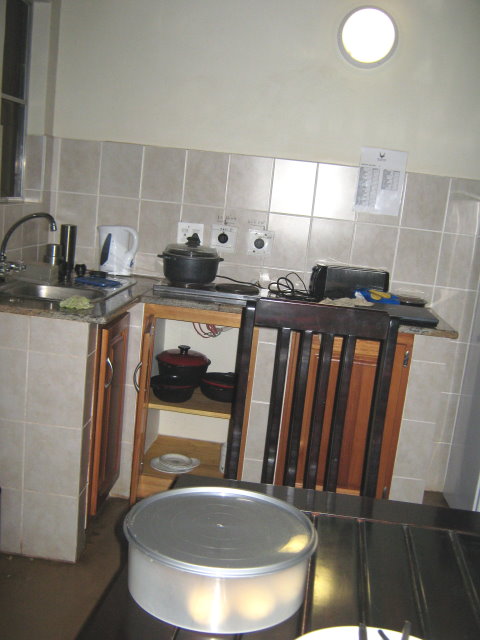
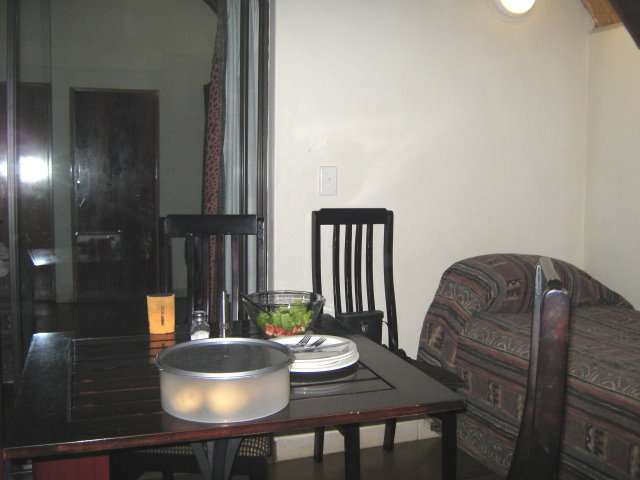

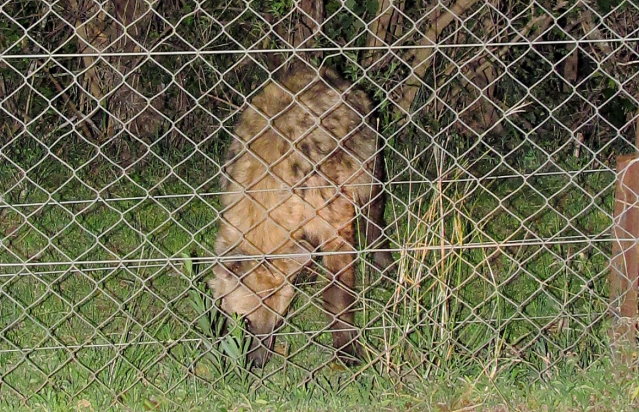
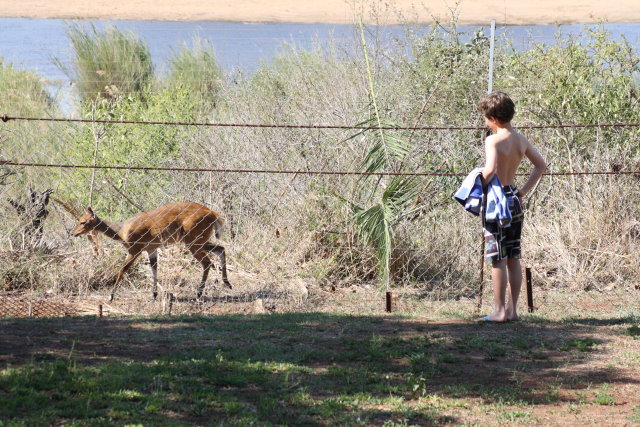
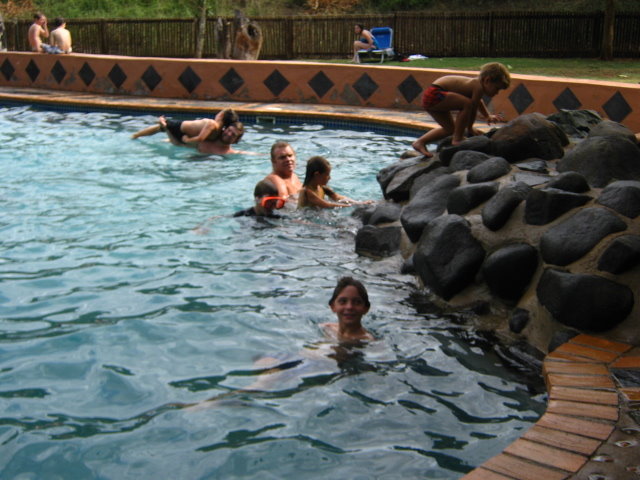




BG3U, Unit 3 (Perimeter unit with large bathroom, 1 bedroom with 2 single beds, separate kitchen/dining room with 1 single bed and large covered verandah)










- Flutterby
- Posts: 44029
- Joined: Sat May 19, 2012 12:28 pm
- Country: South Africa
- Location: Gauteng, South Africa
- Contact:
Re: Lower Sabie Rest Camp
What Nigel Dennis (Where to watch game in the Kruger National Park) says about Lower Sabie:
Lower Sabie enjoys a well-deserved reputation of being an outstanding area from which to view game, and as a result, the camp has a very high occupancy rate. In fact, it is wise to book in advance, especially if you intend to visit during the popular winter period. The camp itself is lushly green and pleasant, and has a wonderful variety of 'resident' bird species.
Anyone of the three main viewing routes that radiate from the camp will offer varied and productive viewing, so it can be a tough decision knowing which one to explore first! One of my favourites is the main H4-2 heading south towards Crocodile Bridge. Lion, leopard and elephant are common along this entire road. Some fine herds of buffalo are also present, and are usually encountered in the first eight or so kilometres, where the H4-2 runs quite close to the Sabie River. White rhino too occasionally occur along this road, as do sizeable herds of giraffe and kudu. The best reward I have had over the last few years while travelling along the H4-2 has been the regular sighting of wild dog. Overall, this must be one of the top roads in the Park for both numbers and diversity of game.
Both the S28 and the S137, leading to Duke water hole, offer a fair opportunity to see cheetah and wild dog. If you head west on the S137 past Duke and turn right onto the S130, a small natural pan lies on the left-hand side, a short distance along this road. On every occasion that I have travelled this route towards evening, I have come across white rhino drinking at the pan.
The H4-1 main route through to Skukuza is both productive and very popular. Sunset Dam lies to the left, barely a kilometre from Lower Sabie. This is a favourite venue for photographers, and is particularly notable for the variety of water birds within easy camera range. It is tempting to spend an entire morning at Sunset Dam, but with so much to see along the length of the H4-1, I generally move on after an hour or so.
Closely following the Sabie River, the H4-1 is a prime route for elephant, buffalo and giraffe, as well as all of the common antelope species that occur in the park. Of course, these regular game movements are a magnet for lion, and it is by no means unusual to spot several prides in a morning's drive. A short detour along the S79 gravel road is also very productive for buffalo and lion.
During the dry winter months, the region to the north of Lower Sabie provides one of the grand spectacles of the Kruger Park. At times, huge herds of zebra and wildebeest gather for winter grazing, and good numbers of elephant are often present as well.
The most productive area lies towards Muntshe, between 10 and 25 kilometres north of Lower Sabie on the H10. The big cats take advantage of such a high concentration of prey species, and on one memorable drive I saw cheetah, leopard and lion within the space of a few kilometres along this route. It is also worth driving down the back roads on either side of the H10, and there is a stunning view of Mlondozi Dam from the parking area off the S29.
- mposthumus
- Posts: 953
- Joined: Thu May 31, 2012 9:51 pm
- Country: South Africa
- Location: Pretora
- Contact:
- harrys
- Posts: 12913
- Joined: Fri Jun 01, 2012 5:37 am
- Country: South Africa
- Location: Warmbaths
- Contact:
Re: Lower Sabie Rest Camp
Does anyone know what the EH1 huts are like or does someone have a pic of a EH1 hut 
KNP:
- Flutterby
- Posts: 44029
- Joined: Sat May 19, 2012 12:28 pm
- Country: South Africa
- Location: Gauteng, South Africa
- Contact:
Re: Lower Sabie Rest Camp
There's a pic just above in mposthumus's post harrys. 
I found this pic in one of leachy's TTs.

I think they have 1 single bed, a basin, a fridge and aircon.
I found this pic in one of leachy's TTs.

I think they have 1 single bed, a basin, a fridge and aircon.
- Richprins
- Committee Member
- Posts: 75008
- Joined: Sat May 19, 2012 3:52 pm
- Location: NELSPRUIT
- Contact:
Re: Lower Sabie Rest Camp
Correct! Also EH-1. 
About R250 per night, one person only.
About R250 per night, one person only.
Please check Needs Attention pre-booking: https://africawild-forum.com/viewtopic.php?f=322&t=596
- harrys
- Posts: 12913
- Joined: Fri Jun 01, 2012 5:37 am
- Country: South Africa
- Location: Warmbaths
- Contact:
Re: Lower Sabie Rest Camp
Thanks Fluts and RP  I wiil be staying in one of them from 13 to 17 May
I wiil be staying in one of them from 13 to 17 May 
KNP:



